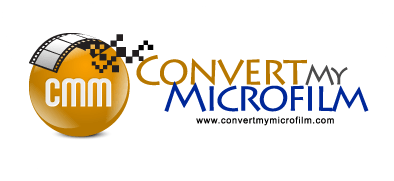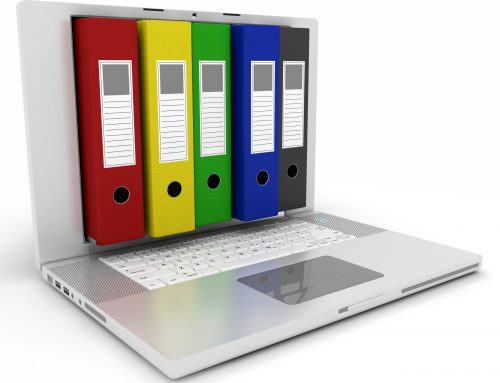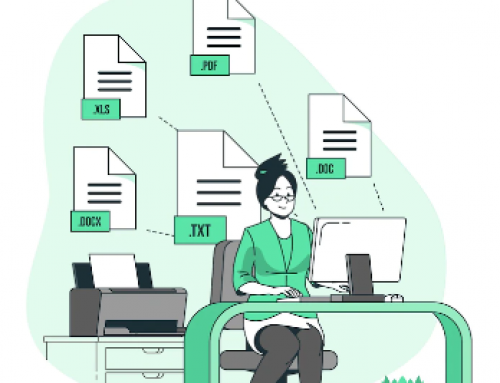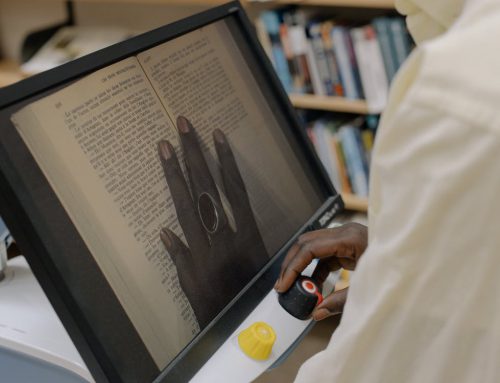Text recognition tools like Adobe Acrobat, Google Drive, and others rely heavily on optical character recognition, also known as OCR. OCR software and picture-to-text technologies have been known since at least the late 1920s, long before most people would have guessed that such an ability would be a recent creation based on some contemporary algorithm.
Who came up with the early kind of optical character recognition?
Gustav Tauschek, an Austrian engineer, came up with this. As far back as 1929 in Germany and 1935 in the USA, he was the inventor of an optical character recognition apparatus.
When asked how he came up with it, Gustav Tauschek remained coy about the source of his groundbreaking software concept. Also, how did it function with the dated technology of the time? As an afterthought, why was Tauschek’s text recognition program so pivotal? Fortunately, there is an answer to each of these puzzles. Learn about Gustav Tauschek and the development of OCR by reading this blog.
History of OCR
At the turn of the twentieth century, the Austrian engineer Gustav Tauschek was widely regarded as somewhat of a genius thanks to his extensive self-education. Tauschek was unquestionably a software genius, capable of inventions well ahead of what was being produced at the time, as evidenced by his over 200 patents, 169 of which he sold to IBM. At various points in his career, he was employed by both IBM and the Rheinische Metallwaren- und Maschinenfabrik, German armaments and automobile manufacturer (known as Rheinmetall today).
The original goal of Tauschek’s work in optical character recognition was to develop fast and accurate software for converting images to text. His punchcard-based calculators relied heavily on this patented technology. This inspiration led Tauschek to create the Reading Machine of Tauschek, a mechanical device that could translate written characters and numbers from a picture into text on paper.
While others, such as American inventor Charles R. Carey, had developed precursors to the OCR before Tauschek, it was with his Reading Machine that Tauschek brought the concept to fruition.
Some Facts Regarding Optical Character Recognition (OCR)
- Early optical character recognition (OCR) image-to-text devices were developed in the late 1800s for use with the visually impaired. The original developers of this software believed it might aid the blind in reading by converting images to text.
- When American inventor Ray Kurzweil developed his Omni-font OCR software in the 1970s, he heavily drew inspiration from Gustav Tauschek’s machine. Amazingly, Ray Kurzweil’s algorithm could identify nearly every type of text face.
- Gustav Tauschek created 169 patents, including his groundbreaking image-to-text innovation, and then sold them all to IBM. After being hired by the software company on a five-year contract, Tauschek employed optical character recognition (OCR) technology to create a punchcard-based accounting system and numerous other punchcard-based equipment..
Different Types of OCR
In the field of data science, OCR technologies are categorized according to their function. Here are a few cases in point:
-
Simple OCR
A basic OCR engine will do its job by keeping a library of pre-existing templates for various types of fonts and textual images. When you upload a picture of some text, the OCR program will utilize pattern-matching algorithms to see how closely it matches the text in its database. Word-by-word matching is known as optical word recognition. The technique has drawbacks because it is impossible to capture and preserve every possible typeface and handwriting style in a database.
-
Intelligent Character Recognition
Modern OCR systems use intelligent character recognition (ICR) technology to read the text the same way a human would. They employ cutting-edge strategies for teaching computers to mimic human behavior with the aid of machine learning programs. Over and over, the image is processed by a machine learning system called a neural network, which analyzes the text. It performs multiple layers of analysis on an image in search of various features like curves, lines, junctions, and loops before concluding. In most cases, ICR analyses the photos one character at a time, yet the entire procedure still only takes a few seconds to complete.
-
Optimal Mark Recognition
In order to scan and digitize documents, optical mark recognition (OMR) has been developed. Commonly, a scanner is used in optical mark identification because it examines how much light is transmitted or reflected by the paper; areas with markings reflect less light than the blank paper, making for less contrasted reflectivity. Another name for optical mark recognition is “mark reading.”
-
Zonal Recognition
Regarding OCR systems, zonal OCR can be considered the next generation. Zonal optical character recognition (OCR) or template OCR can locate and extract text from a document or image’s defined regions (zones). It’s put to use whenever only certain document zones need to be extracted.
What Are the Benefits of OCR?
-
Increased Productivity
OCR software aids organizations in increasing output by allowing for easier data retrieval in times of need. Employees can now redirect the time and energy they would have spent on data extraction to more important tasks. In addition, workers may get the information they need without ever leaving their seats, thanks to centralized document storage.
-
Reduced Operational Costs
One of the most significant advantages of OCR data entry technologies is that it allows organizations to reduce the number of people they need to hire to perform data extraction. Using this tool, you can save money on paper, ink, postage, and more. Therefore, OCR removes the expense of replacing lost or stolen papers and provides further savings in the form of recovered office space.
-
Greater accuracy of Data Interpretation
OCR improves the quality of the data that businesses keep on file. With the use of OCR, which looks through documents for customer inquiries, the latter can obtain precise answers to their questions. Consequently, this results in happier customers. In certain instances, businesses can also utilize optical character recognition software to glean information from paper documents and rapidly check it against internal databases. This makes it simpler to implement safety measures and safeguard user information.
-
Ease of Management
With the help of OCR software, photos can be easily converted into text and word documents from which information may be selected. Due to this, massive datasets can be kept as editable and shareable digital files. When data can be stored conveniently, it can be accessed by a wider audience. Workers can access past client information and case files electronically, eliminating the need to go through filing cabinets.
-
Improve Customer Service
Customers may usually find the answers they’re looking for at one of several inbound call centers. While some call centers can give all the information their clients require, others will need immediate access to customers’ private or order-related data to fulfill customers’ demands. In these situations, fast data access is crucial. Optical character recognition allows for the efficient digital filing and retrieval of documents. Customers will have a far better experience as a result of the significant decrease in waiting time.
-
Save Space
Secure document scanning and cataloging data from paper documents across an organization are all possible with OCR. The requirement for keeping massive paper files is thus eliminated, and the data need only be saved in an electronic format on servers. OCR data entry is, therefore, one of the most useful instruments for promoting a “paperless” culture throughout a company.
How Does OCR Work?
In order to perform its function, the OCR engine or OCR software goes through the following motions:
Scanning Process
A scanner takes in printed material and produces digital information from it. The OCR program analyzes the scanned image, determining which parts are text and background.
Image Processing
Before the text can be read, the OCR program must fix any mistakes and clean up the image. Some of the ways it cleans are as follows:
- Slightly tilting or “deskewing” the scanned document to correct alignment issues.
- Smoothing off the borders of text graphics and eradicating any specks from digital photos.
- Removing unwanted lines and boxes from a picture.
- Script recognition for multilingual OCR technology.
Character Recognition
AI examines the dark areas of the image to decipher the text or numbers. To focus on a specific character, phrase, or even paragraph, AI often uses one of the following methods:
-
Pattern Recognition
Isolating individual parts of characters (called “glyphs”) and comparing them to previously recorded glyphs is how pattern matching works. The font and size of the input glyph and the stored glyph must be comparable for pattern recognition to be successful. This method can easily read scanned texts typed in a standard font.
-
Feature extraction
Lines, line direction, closed loops, and line intersections are only some features extracted from the glyphs during the feature extraction process. Based on these characteristics, it looks for a matching or nearby glyph in its database.
Verification
During Post-Processing, AI fixes any remaining problems with the final file. The AI might be taught a set of definitions for words appearing in the paper. Finally, you may make sure that no interpretations are possible that are outside the vocabulary by restricting the AI’s output to those words/formats.
Use Cases
OCR has many applications, and any business that handles paper documents can benefit from using it. Some examples of interesting applications are as follows:
-
Word Processing
Word processing likely was one of the first and most widespread use cases of optical character recognition (OCR). Secure document scanning into digital formats allows them to be edited and shared, and AI aids in this process to ensure the highest level of accuracy.
-
Legal Documentation
Loan documentation and other legally binding documents can be scanned and filed away in an electronic database for easy access. In addition, many others can access and share the files.
-
Banking
A check you want to deposit can be photographed on both sides with your phone. The OCR technology, powered by artificial intelligence, may examine the check automatically to validate its legitimacy and confirm the amount you intend to deposit.
Conclusion
You need Convert My Microfilm if you’re having trouble processing a lot of PDFs or other formats that require a lot of manual keying of data into your back office systems. Even with great attention to detail, data input by hand is a time-consuming process fraught with the possibility of human error. Invoices, contracts, paperwork, and more may all be digitized with the help of secure document scanning from Convert My Microfilm.
Convert My Microfilm is the answer if you wish to scan and digitize documents into an organized format and draw useful conclusions.







Leave A Comment